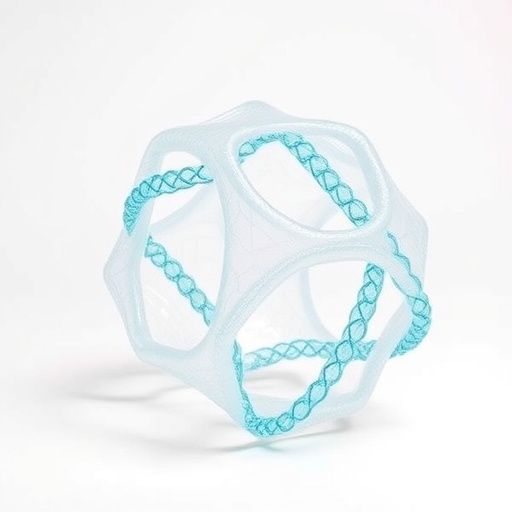Scientists at the University of Copenhagen have unveiled a groundbreaking method that transforms plastic waste into an innovative and highly efficient material for capturing carbon dioxide (CO₂). This pioneering approach not only addresses the escalating issue of plastic pollution but simultaneously offers a promising solution to the global climate crisis by enabling sustainable and effective CO₂ sequestration. By converting discarded polyethylene terephthalate (PET) plastic—one of the most ubiquitous plastics worldwide—into a novel sorbent called BAETA, researchers have bridged two seemingly disparate environmental challenges with a single transformative technology.
The steadily rising atmospheric concentrations of CO₂ continue to challenge international climate targets, necessitating novel methods to capture and reduce greenhouse gases. Concurrently, vast quantities of plastic waste continue to accumulate in landfills and oceans, particularly PET plastic used in bottles and textiles. These materials degrade into microplastics, wreaking havoc on marine ecosystems and infiltrating soil and water resources. Traditionally, efforts have tackled these issues separately, but the University of Copenhagen’s researchers have demonstrated that interlinked environmental problems can be solved through synergistic innovation rather than isolated fixes.
At the heart of this innovation is the chemical upcycling of PET plastic waste. PET is known for its durability and widespread use, but its end-of-life disposal remains problematic, often leading to environmental contamination. The research team devised a method to chemically break down PET polymers into monomer units and refunctionalize them by integrating molecules that possess strong CO₂ binding abilities, particularly ethylenediamine. This chemical modification elevates the material’s affinity for CO₂, producing a powdery, pelletizable substance named BAETA that can adsorb carbon dioxide efficiently under a wide range of temperatures.
Critically, the BAETA material exhibits remarkable thermal stability and flexibility, remaining effective from room temperature up to approximately 150 degrees Celsius. This makes the material especially suitable for deployment in industrial contexts, where flue gases emitted from chimneys are often hot. The ability to capture CO₂ at elevated temperatures without significant loss of efficiency provides a practical advantage over many existing capture technologies, which often require lower temperatures or costly energy inputs to function efficiently.
Once BAETA absorbs CO₂, it can be regenerated through a controlled heating process that releases the captured gas. This cyclical capture and release capability enables the material to serve as an active sorbent over multiple cycles without substantial degradation of performance. The released CO₂ can then be collected for long-term storage in underground reservoirs or utilized in emerging Power-to-X (Power2X) processes, in which CO₂ acts as a feedstock for sustainable fuels and chemicals, thereby closing the carbon loop.
The innovation’s scalability is particularly promising. Unlike certain current carbon capture materials that involve complex synthesis requiring high temperatures or pressures, the BAETA production process is comparatively gentle and can be conducted at ambient temperatures. This lowers the energy demand and manufacturing cost, facilitating large-scale industrial adoption. The researchers are actively exploring ways to produce BAETA material in quantities sufficient to equip industrial carbon capture plants, with ambitions to transition the technology from the laboratory to real-world application in the near future.
Moreover, this groundbreaking technology alleviates concerns that it would compete with or undermine existing recycling systems. Instead, it targets low-quality, colored, or mixed-source PET plastics that are difficult to recycle conventionally or have degraded too far to be repurposed for standard recycling efforts. By focusing on these challenging waste streams, the approach complements, rather than conflicts with, ongoing recycling initiatives, creating a collaborative pathway toward resource-efficient waste management.
One of the most compelling aspects of this research is its potential impact on ocean pollution. Massive amounts of PET plastic accumulate in marine environments, breaking down into microplastics that threaten aquatic life and ecosystems. BAETA’s production method is well-suited to utilize highly decomposed PET plastics collected from the ocean, offering a tangible incentive to support marine plastic cleanup efforts. This could revolutionize the perception of marine plastics from merely an environmental hazard to a valuable resource in the fight against climate change.
The core chemistry behind BAETA centers on the incorporation of ethylenediamine, a ligand known for its robust interaction with CO₂ molecules. When PET is chemically deconstructed to monomers and subsequently reacted with ethylenediamine, the resulting material exhibits enhanced chemical surface properties that improve CO₂ adsorption. This creates a stable yet reversible binding context, uniquely positioning BAETA among CO₂ sorbents for its blend of efficiency, regenerative capacity, and environmental sustainability.
Institutional support from the Novo Nordisk Foundation CO₂ Research Center and collaboration with Aarhus University’s research groups have been essential in driving this innovation forward. Contributions from multidisciplinary teams spanning chemistry, materials science, and environmental engineering underscore the complexity and novelty of the approach. The detailed methodologies and experimental findings have been published recently in the peer-reviewed journal Science Advances, further underscoring the study’s academic rigor and impact.
While the researchers remain optimistic about the technical feasibility of scaling up BAETA production, they acknowledge that the realization of the technology’s full potential hinges on securing industrial investments and policy support. Convincing stakeholders to prioritize carbon capture infrastructure and invest in new materials remains a critical hurdle. However, the dual benefit of addressing two major environmental crises—climate change and plastic pollution—may provide a compelling narrative to attract broad-based support.
Ultimately, the development of BAETA represents a visionary step toward integrated environmental solutions. By converting plastic waste, a global pollutant, into a high-performance carbon capture material, this technology exemplifies circular economy principles and could significantly disrupt traditional waste and climate management paradigms. It demonstrates that environmental challenges need not be confronted in isolation, reinforcing the idea that innovative chemistry plays a crucial role in shaping a sustainable future.
Subject of Research: Conversion of plastic waste into carbon capture materials
Article Title: Repurposing Polyethylene Terephthalate Plastic Waste to Capture Carbon Dioxide
News Publication Date: 5-Sep-2025
Web References: http://dx.doi.org/10.1126/sciadv.adv5906
References: Science Advances, DOI: 10.1126/sciadv.adv5906
Image Credits: Photo by Max Emil Madsen, University of Copenhagen
Keywords
Plastic Waste, Carbon Capture, PET Recycling, Climate Crisis, CO₂ Sorbents, BAETA Material, Sustainable Chemistry, Industrial Scale-Up, Circular Economy, Environmental Innovation, Ethylenediamine, Microplastics




